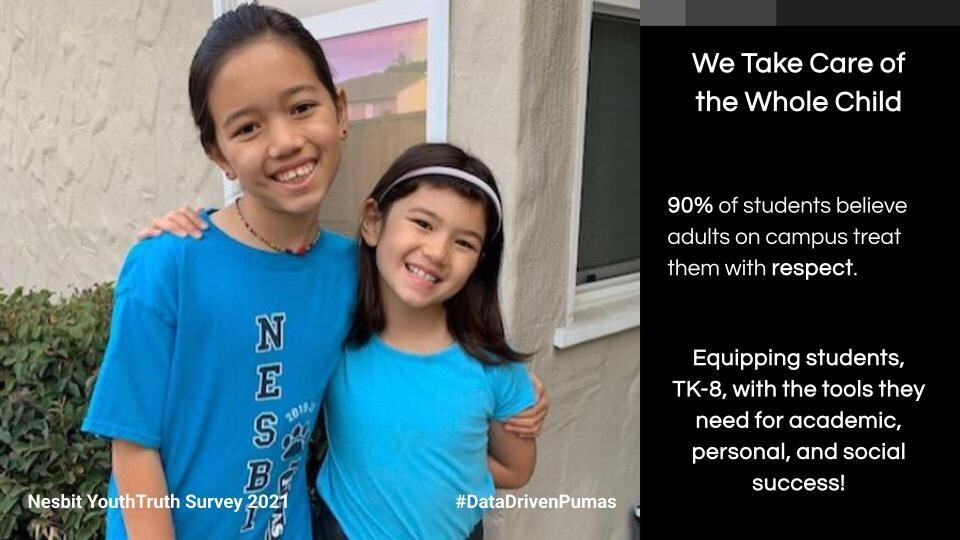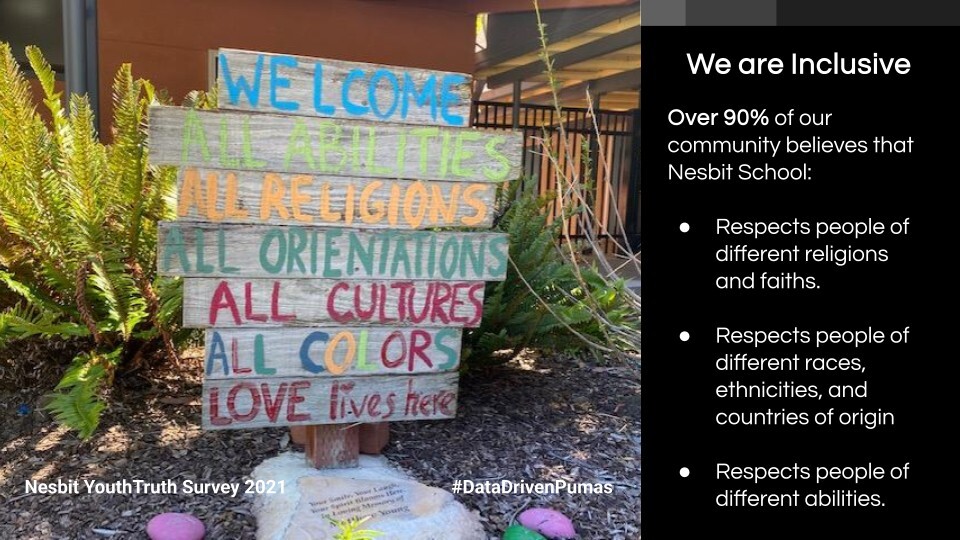

Nesbit School in affluent San Mateo County, south of San Francisco, is unlike any other in the Belmont-Redwood Shores School District. Students’ scores on state assessments in math and English lag behind district averages. It’s the only campus in the school system designated a Title I school. And it educates the highest population of English language learners.
When Ryan Hansen started as the school’s principal in 2020-21, she knew there was more to the school than grades and test scores alone could measure. So Hansen partnered with YouthTruth to collect actionable data using YouthTruth’s survey of the Student Experience – and used it to develop a culture where school improvement is driven by listening to students.

Our kids love us and we love our kids, and our data tells that. I know our kids are already showing up – maybe not reading at grade level or not having reading readiness – but they’re coming to school, really loving that they can try.”
–Ryan Hansen, Principal, Nesbit School
Hansen knew, as research shows, that fostering an empathetic environment where young people can thrive, ultimately improves student outcomes, including higher reading proficiency and fewer chronic absences and suspensions.
The YouthTruth survey asked third through eighth grade students at Nesbit about experiences that influence – but are not captured – by traditional measures of school performance such as grades and test scores: Does your teacher treat you with respect? Does your teacher ask you to keep trying when the work gets hard?


Of course, building a stronger school culture and learning environment required more than collecting information.
To share the results with her community, Hansen developed “30 Days of Data,” where she presented information each day based on YouthTruth survey results, posting graphics and photos to accompany the information on social media with #DataDrivenPumas, a reference to the school’s mascot. She also shared the results in a newsletter and on a poster in the staff breakroom.
“I tried to pick the highest data points,” Hansen says. “Even the ones that may statistically look low, I leaned into creating a really pretty image that showed what the potential of it can be.”
One image featured the photo of a young boy flashing a thumbs up accompanied by a statistic that shows 90 percent of students at Nesbit believe their teacher cares about them.
Another image, which includes a photo of an educator reading to children sitting on a picnic blanket, offers three statistics: 91 percent of students feel adults in their lives want them to work their hardest; 80 percent of parents believe Nesbit provides guidance for their child to succeed and 71 percent of parents say they receive information about their child’s learning.
The insight from students also drives improvements to instruction.
The school recruited female counseling interns after girls at the school shared they were uncomfortable visiting male counselors. After students said they had trouble connecting their schoolwork to the real world, the school expanded its programs and found parents who offered music and cooking lessons. And this academic year, teachers will ask students to identify problems in their communities and present solutions.
By partnering with YouthTruth, Hansen says she’s able to enhance learning by building on the strong culture that already exists.
“You can’t have one without the other,” she says.